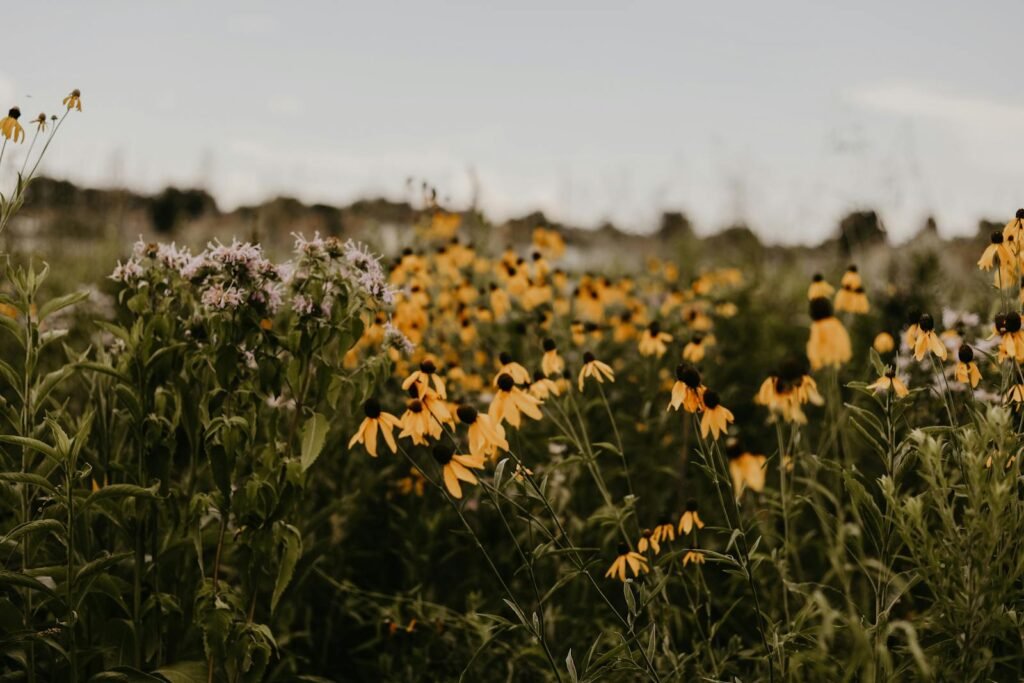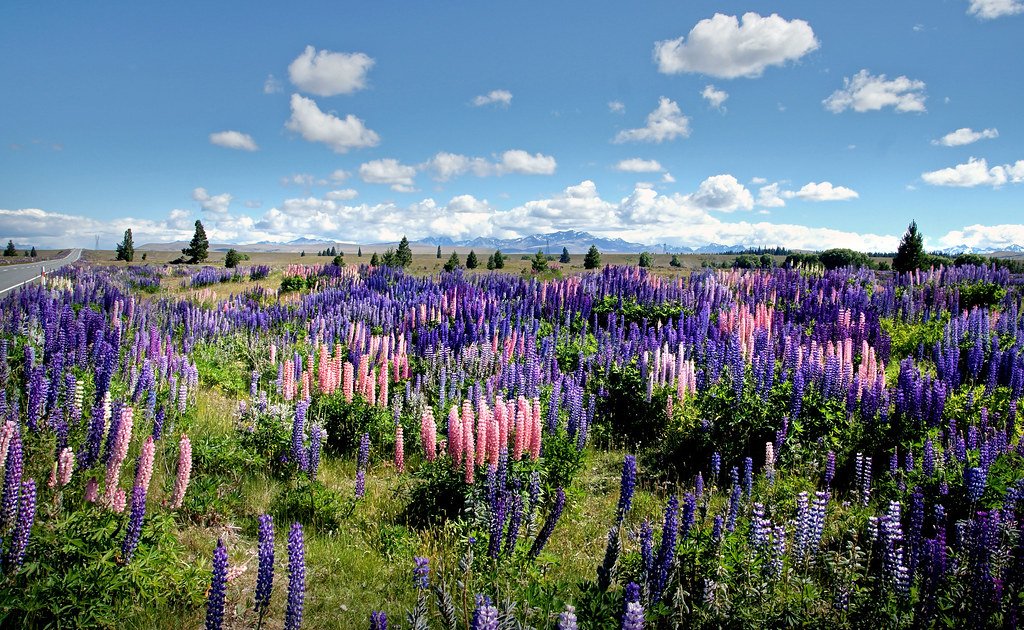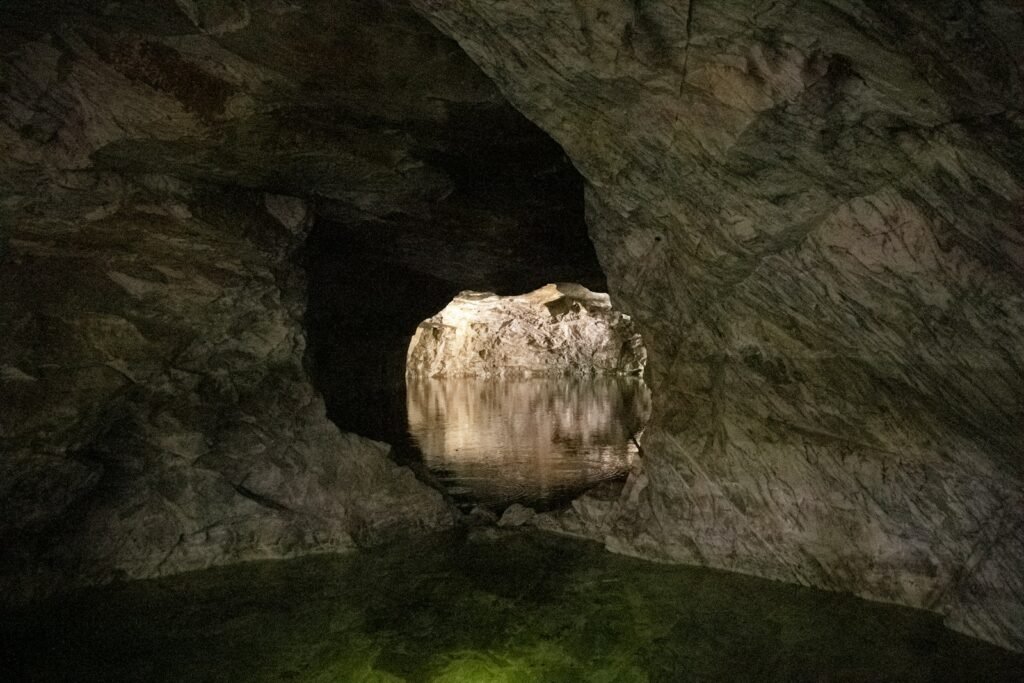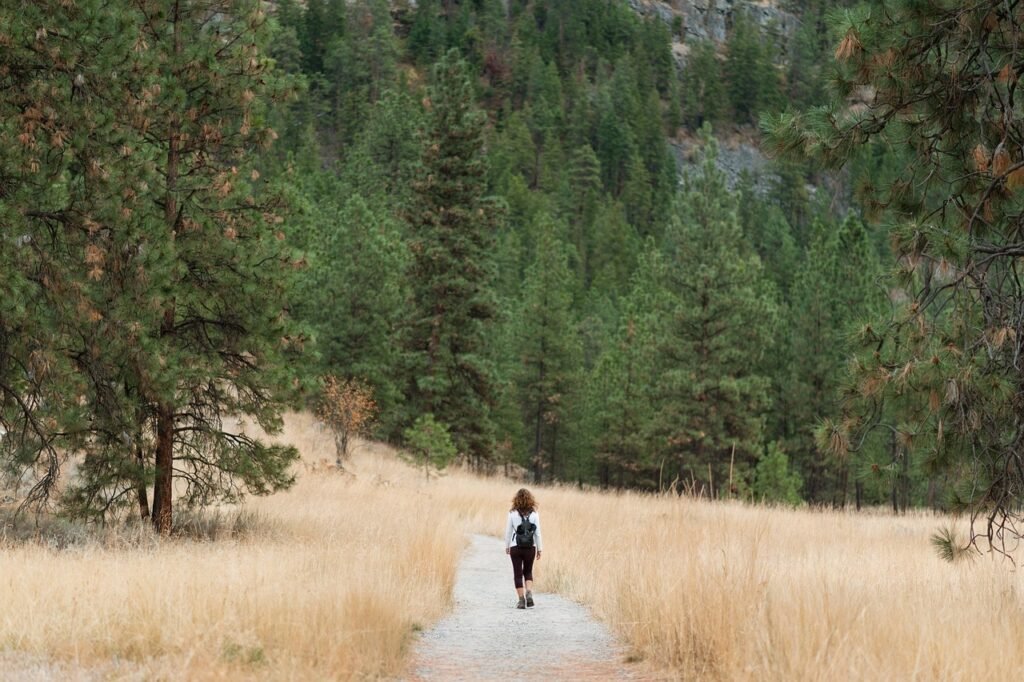The American landscape is a tapestry of incredible diversity, from the towering redwoods of California to the wildflower meadows of Texas. Yet many of us have forgotten the plants that originally called our neighborhoods home. Walk through most suburban areas today and you’ll see the same handful of non-native species – Japanese maples, English ivy, and Bradford pears – repeated endlessly across lawns and gardens. But what if I told you that your backyard could become a thriving ecosystem that supports hundreds of species while requiring less water, fertilizer, and maintenance than traditional landscaping?
Why Native Plants Are Nature’s Perfect Solution

Native plants have spent thousands of years adapting to your local climate, soil conditions, and rainfall patterns. They’ve evolved alongside local wildlife, creating intricate relationships that support entire food webs. A single oak tree can host over 500 species of butterflies and moths, while non-native ornamentals might support only a handful. These plants don’t just survive in your region – they thrive, often with minimal human intervention once established. When you choose native species, you’re essentially working with nature instead of against it, creating a garden that becomes more beautiful and self-sustaining with each passing year.
The Pacific Northwest: Where Ferns Meet Giants

The Pacific Northwest’s cool, wet winters and dry summers create perfect conditions for some of America’s most spectacular native plants. Douglas fir and western red cedar form the backbone of this region’s gardens, providing year-round structure and habitat for countless birds. Underneath these giants, sword ferns create lush green carpets that stay vibrant even during the driest summer months. Oregon grape offers early spring flowers followed by edible berries, while salal provides dense groundcover that deer tend to avoid. The key to success here is embracing the natural forest understory aesthetic – think layers of green in different textures rather than bright flower displays.
California’s Mediterranean Magic

California’s diverse climate zones offer gardeners an incredible palette of drought-tolerant native plants. Ceanothus, or California lilac, explodes with blue or white flowers in spring while requiring virtually no summer water once established. Manzanita provides year-round interest with its sculptural red bark and delicate urn-shaped flowers. California poppies paint hillsides orange and gold, reseeding themselves year after year with minimal care. Sage species like Cleveland sage and white sage not only smell incredible but also attract beneficial insects while deterring pests. These plants have mastered the art of surviving on minimal water, making them perfect for the state’s ongoing drought challenges.
Desert Southwest: Beauty in Harsh Conditions

The desert might seem like a challenging place to garden, but native plants here have evolved incredible strategies for survival that translate into stunning landscape features. Palo verde trees provide filtered shade with their green bark and bright yellow spring blooms. Brittlebush creates silvery mounds topped with cheerful yellow daisy-like flowers that bloom for months. Desert marigold offers nearly year-round color, while penstemon species attract hummingbirds with their tubular flowers. Ghost plant agave forms perfect rosettes that glow in the evening light, and barrel cacti add architectural interest while requiring almost no care. The secret to desert gardening is understanding that less is often more – these plants shine when given space to show off their natural forms.
Rocky Mountain Resilience

High altitude gardening in the Rocky Mountain region means dealing with intense sun, sudden temperature swings, and strong winds. Native plants here are incredibly tough, having adapted to these extreme conditions over millennia. Aspen trees create stunning golden displays in fall while providing summer shade and winter interest with their white bark. Colorado blue spruce offers year-round structure and wildlife habitat. Blanket flower blooms from spring through fall, producing cheerful red and yellow flowers that seem to glow in the mountain sun. Rocky Mountain beeplant attracts pollinators while providing edible seeds for birds and humans alike. These plants don’t just survive mountain conditions – they celebrate them, creating gardens that feel perfectly at home in their dramatic landscape.
Great Plains: Grassland Glory

The Great Plains might seem like an endless sea of grass, but this ecosystem supports an incredible diversity of native plants perfectly adapted to hot summers, cold winters, and unpredictable rainfall. Little bluestem grass provides fine-textured groundcover that turns copper and orange in fall. Purple prairie clover creates dense stands of purple flowers that feed both livestock and wildlife. Black-eyed Susan brightens summer landscapes with golden blooms that last for months. Wild bergamot attracts bees and butterflies while offering edible leaves with a minty flavor. Prairie dropseed forms elegant fountain-like clumps that catch and hold morning dew, creating magical garden moments. These grassland plants create movement and texture that changes with every breeze, bringing life and energy to prairie gardens.
Midwest: Where Forest Meets Prairie

The Midwest represents a transition zone where eastern forests meet western prairies, creating opportunities for incredibly diverse native plant gardens. Sugar maples provide spectacular fall color and valuable sap, while oak species support more wildlife than almost any other tree genus. Wild ginger creates dense groundcover in shaded areas with heart-shaped leaves and curious maroon flowers. Purple coneflower has become a garden favorite worldwide, but it originated right here in the Midwest plains. Wild columbine adds delicate blue and white flowers to spring gardens, while cardinal flower brings brilliant red to late summer landscapes. This region’s plants handle both drought and flooding, making them incredibly adaptable to changing weather patterns.
Great Lakes Region: Wetland Wonders

The Great Lakes create a unique microclimate that supports plants adapted to both wet and dry conditions, often in the same garden. Wild rice grows in shallow waters, providing food for waterfowl and humans alike. Swamp milkweed thrives in wet soils while supporting monarch butterflies throughout their lifecycle. Paper birch trees offer striking white bark and golden fall color, creating four-season interest in the landscape. Wild lupine produces spikes of blue flowers while fixing nitrogen in sandy soils. Elderberry provides both edible flowers and berries while creating dense thickets that shelter wildlife. These plants understand the region’s variable water conditions, creating gardens that look great whether it’s a wet year or a dry one.
Northeast: Four-Season Drama

The Northeast’s dramatic seasonal changes call for plants that provide interest throughout the year. Sugar maple and red maple create spectacular fall displays, while their bare winter branches add architectural interest to snow-covered landscapes. Mountain laurel provides evergreen structure with showy pink or white flower clusters in late spring. Winterberry holly produces bright red berries that persist through winter, feeding birds when other food sources are scarce. Wild ginger and mayapple create lush groundcover in shaded areas, while bee balm attracts pollinators and provides aromatic leaves for tea. These plants embrace the region’s seasonal extremes, creating gardens that celebrate each time of year rather than simply enduring it.
Mid-Atlantic: Transition Zone Treasures

The Mid-Atlantic region sits at the crossroads of northern and southern plant communities, offering gardeners an incredibly diverse palette of native species. Redbud trees produce masses of pink flowers directly from their branches in early spring, creating one of the season’s most dramatic displays. Spicebush provides yellow fall color and produces berries that are essential food for migrating birds. Wild bergamot and bee balm create pollinator magnets in summer gardens, while their dried seed heads add winter interest. Virginia bluebells carpet woodland areas with blue flowers in spring before disappearing completely by summer, making room for other plants to shine. These plants understand the region’s variable climate, handling both northern cold and southern heat with equal grace.
Southeast: Heat and Humidity Champions

The Southeast’s long, hot summers and mild winters create perfect conditions for plants that many northern gardeners can only dream of growing. Southern magnolia provides year-round structure with glossy evergreen leaves and massive fragrant flowers. Beautyberry produces clusters of bright purple berries that seem almost artificial in their intensity. Coral honeysuckle attracts hummingbirds with its tubular red flowers while avoiding the invasive tendencies of its non-native cousins. Wild azalea species bloom in shades of pink, white, and orange, often filling entire woodlands with fragrance. These plants have mastered the art of staying beautiful in high heat and humidity, creating gardens that thrive when other landscapes struggle.
Florida: Subtropical Splendor

Florida’s unique climate allows for some of America’s most exotic-looking native plants. Coontie, a native cycad, creates prehistoric-looking landscape features while supporting the rare Atala butterfly. Firebush produces orange-red flowers nearly year-round, attracting both hummingbirds and butterflies. Beautyberry thrives in Florida’s heat while providing food for over 40 bird species. Wild coffee creates dense understory plantings with glossy leaves and bright red berries. Simpson’s stopper offers fragrant white flowers and colorful berries while tolerating both salt spray and inland conditions. These plants create tropical paradise gardens using species that have called Florida home for thousands of years.
Texas: Big State, Bigger Plant Diversity

Texas encompasses multiple climate zones, from desert to forest to coastal plains, creating opportunities for incredibly diverse native plant gardens. Bluebonnets create spectacular spring displays that have become the state’s signature wildflower. Texas sage produces silvery foliage and purple flowers while tolerating extreme heat and drought. Turk’s cap provides shade and produces red flowers that hummingbirds adore. Flame acanthus blooms in fall when most other plants are shutting down, providing late-season nectar for migrating butterflies. Live oak creates the perfect shade tree for hot climates, while its acorns feed countless wildlife species. These plants understand Texas’s extreme weather patterns, creating gardens that look great from the pine forests of East Texas to the deserts of West Texas.
Understanding Your Local Ecosystem

Before selecting any native plants, take time to observe what grows naturally in your area. Visit local nature preserves, take note of plants thriving in similar conditions to your yard, and pay attention to seasonal changes. Your local soil type, drainage patterns, and sun exposure will determine which native species will thrive in your specific location. Even within regions, microclimates can vary dramatically – a north-facing slope might support woodland plants while a south-facing slope favors prairie species. Understanding these nuances helps you choose plants that will not only survive but flourish in your unique garden conditions.
The Pollinator Connection

Native plants and native pollinators have evolved together, creating relationships that are often highly specific and mutually beneficial. Monarch butterflies can only reproduce on native milkweed species, while native bees are far more effective at pollinating native flowers than their European honeybee cousins. Creating pollinator habitat in your yard means providing both nectar sources and host plants where insects can complete their lifecycles. A single native plant might support dozens of pollinator species, while exotic ornamentals often provide little to no benefit. By choosing native plants, you’re creating stepping stones that help maintain pollinator populations across fragmented landscapes.
Soil and Water: Working with What You Have

Native plants have adapted to local soil conditions over thousands of years, meaning they’re perfectly suited to whatever your yard naturally provides. Clay soil that defeats most garden plants might be perfect for prairie species that have evolved to handle heavy, moisture-retentive earth. Sandy soil that drains too quickly for traditional gardens creates ideal conditions for desert and coastal plants. Rather than fighting your soil type with amendments and irrigation, embrace it by choosing natives that naturally thrive in your conditions. This approach creates gardens that become more beautiful and self-sustaining over time, requiring less water, fertilizer, and maintenance as plants mature.
Seasonal Interest: Planning for Year-Round Beauty

Native plant gardens can provide interest throughout the growing season and beyond by combining species with different flowering times, fruit production, and winter characteristics. Spring ephemeral wildflowers create early season color before tree leaves emerge, while late-blooming asters and goldenrod extend the season into fall. Seed heads left standing through winter provide food for birds and architectural interest in snow-covered landscapes. Evergreen native shrubs and trees maintain structure year-round, while deciduous species offer seasonal changes that mark the passage of time. Planning for this seasonal succession creates gardens that always have something interesting happening, from the first spring flowers to the last autumn berries.
Common Mistakes and How to Avoid Them

The biggest mistake new native plant gardeners make is treating native species like exotic ornamentals, providing too much water and fertilizer rather than allowing plants to adapt naturally. Native plants often look their best when slightly stressed, developing the compact growth and intense flowering that characterizes wild populations. Another common error is choosing plants based on appearance alone rather than considering their specific habitat requirements – a woodland wildflower won’t thrive in a sunny prairie garden no matter how much you want it to. Patience is crucial, as many native plants take time to establish but then outperform exotic species once settled. Remember that native doesn’t automatically mean low-maintenance – it means appropriate maintenance for your specific conditions.
Creating Your Personal Native Paradise

Starting a native plant garden doesn’t require ripping out everything and starting over – you can begin by replacing plants as they decline or by adding native species to existing beds. Focus on creating habitat layers, from canopy trees down to groundcover plants, mimicking the structure of natural plant communities. Consider how your garden connects to surrounding green spaces, creating corridors that allow wildlife to move through the landscape. Don’t be afraid to let some areas go a bit wild – native plants often look their best when allowed to naturalize and spread according to their preferences. Your yard can become a haven for both wildlife and humans, a place where you can connect with the natural heritage of your region while creating beauty that changes and grows more spectacular with each passing season.
Transform your outdoor space into a living testament to your region’s natural beauty, and you might just discover that the most stunning gardens are the ones that feel like they’ve always belonged exactly where they are. What treasures are waiting to be discovered in your own backyard ecosystem?




